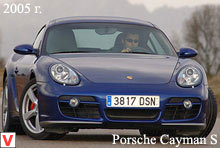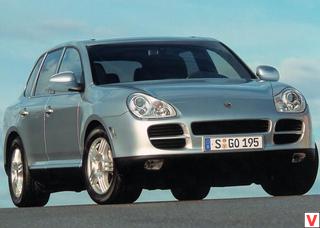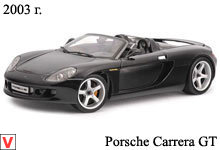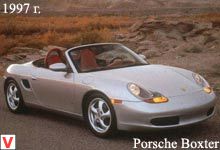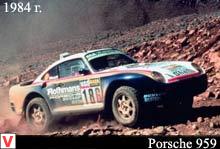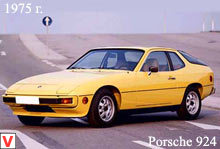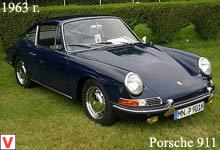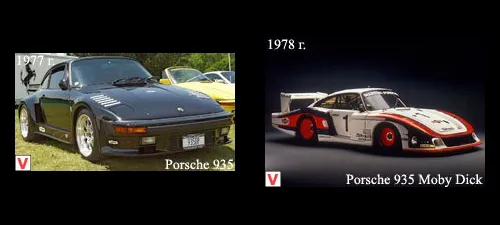
The Porsche 935 was created in 1976 on the basis of the Porsche 911 (930) Turbo to participate in Group 5 competitions, according to the rules of which the car had to be created on the basis of a production model and have a certain degree of similarity with it. In the back one could recognize the design of the model 930, but at first there were new elements in the eye. The headlights of the car found a new place in the front bumper, and the car received a so-called “flat nose” without bulging round headlights.
Later, it became an option for Porsche road cars, the wheel arches widened, the wings were convex and were designed for larger wheels, and the rear wing received several levels of aerodynamic planes. Internal differences were more significant. The machines were fitted with Bilstein gas shock absorbers, an adjustable rear stabilizer from the passenger compartment and four brake calipers borrowed from the 917 model. The four-speed transmission migrated from the 934 without changes. The 935 engine was created on the basis of the serial sample and seriously forced.
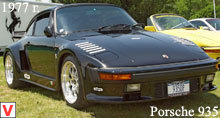
The turbo-motor of a car with a capacity of 2850 cm³, equipped with a KKK supercharger, was created according to the most advanced technologies of that time. Depending on the boost pressure, regulated from the cabin in the range of 1.2 to 1.5 bar, the car could develop power up to 650 hp. The following year, in 1977, an even more powerful version with two turbo-superchargers KKK was prepared for the factory team, which became the winner of the world championship of that year. And for private teams, the Porsche 935 became available in the specifications of the previous 1976 season.
As a result, 13 cars were prepared for private teams, and in 1977 they won 4 stages of the world championship, all stages of the Trans-Am series and half of the stages of the IMSA series. These cars have been competitive for at least another 5 years, winning many competitions around the world, evolving into the workshops of private teams such as Kremer or Dauer, until the appearance of the racing prototypes of Group C. Well, in 1978, an absolutely extreme version of the Porsche 935 was prepared for the factory team. The car even got its own name - for the very long profile of the back of the car it was nicknamed “Moby Dick”.
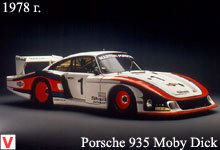
In fact, only the middle part of the body, or rather the roof and doors, was preserved from the production car in this design. New, elongated front and rear subframes docked to the middle part of the body and were the basis for mounting the suspension and body panels made of fiberglass and carbon fiber. Externally, the car almost did not resemble his road fellow: a very long, low, with a huge rear wing and wide arches, the car had an exclusively racing purpose. The turbo-motor of the car, with a volume of 3.2 liters, developed a power of 750 hp, and in the qualification mode, by raising the boost pressure, it was possible to reach 800 hp.
Due to this, the dynamics of the car was fantastic - the car spent 2.6 seconds to reach 100 km / h, and the maximum speed was 360 km / h. In total, three such cars were made, of which only one started in races. The crew of this car took the start in only four races, where, despite the enormous advantage in speed, won only one victory.
The reason for the relative failures were technical problems. In the same year, Porsche announced the completion of a sports car preparation program, and work on the fine-tuning of the 1978 Porsche 935 was discontinued. and the maximum speed was 360 km / h. In total, three such cars were made, of which only one started in races. The crew of this car took the start in only four races, where, despite the enormous advantage in speed, won only one victory.
The reason for the relative failures were technical problems. In the same year, Porsche announced the completion of a sports car preparation program, and work on the fine-tuning of the 1978 Porsche 935 was discontinued. and the maximum speed was 360 km / h. In total, three such cars were made, of which only one started in races. The crew of this car took the start in only four races, where, despite the enormous advantage in speed, won only one victory. The reason for the relative failures were technical problems. In the same year, Porsche announced the completion of a sports car preparation program, and work on the fine-tuning of the 1978 Porsche 935 was discontinued.
This is how the racing versions of Porsche road cars developed - from an atmospheric car with a capacity of 230 hp. up to a carbon eight-turbo monster. But it's not just about pure power - the company's engineers managed to traditionally make Porsche's rear-engine cars predictably manageable and technically reliable.
